Sure, the Samsung Galaxy S9 may be over two years old, but it's still one of the best smartphones from the last few years that you can still pick up if you want. Plus, the Galaxy S9 price is lower than its successors in the Galaxy S10 and Galaxy S20 series, or even its contemporary the Galaxy S9 Plus.
The Samsung Galaxy S9 built on its predecessor the Galaxy S8 in a few ways, and that in itself was one of the best smartphones at the time. As such the Galaxy S9 hit that list as well, as well as our ranking of the best camera phones, even though it wasn't an upgrade over the S8 in every way.
There are a raft of features that some looking to buy the Galaxy S9 will find appealing. Yes, the design is identical to the Galaxy S8, and in reality this really should have been an Apple-esque 'S' variant of that model if Samsung ever wanted to ape the Cupertino, California firm's naming strategy.
But there's a higher-power camera on the back that brings genuine innovation in the dual-aperture shutter, as well as a more robust frame and so, so much more power under the hood.
The screen is bright and the dual speakers make this more of a media marvel - and the Galaxy S9 fixes one major flaw with the S8 by making it easy to unlock the phone with your face or finger, which 2017's model failed at - and that's why we named it as one of our best smartphones around when it released, although it's since slipped down the rankings.
If this sounds like we're talking up an uninspiring phone, that's partly true - but we wanted to make sure you knew the big changes on the S9 if you were confused on why it looks so similar to last year's model.

These plus points are also set against a backdrop of a high price; we’re not talking iPhone XS levels here, but it’s still one of the more expensive options you can buy. The larger Samsung Galaxy S9 Plus with a 6.2-inch screen is even pricier.
The Galaxy S9 is a lot cheaper than the S10 range though, especially the Samsung Galaxy S10 Plus, so it's not the most money you could spend on a Galaxy phone.
If you're considering buying the Galaxy S9 we've written a comparison of the Galaxy S10 vs Galaxy S9, so check that out for a rundown of the differences - or read on to find out our full in-depth thoughts on the Samsung Galaxy S9.
- Want to see it in a bigger size? Read our Samsung Galaxy S9 Plus review
Price and release date
Samsung Galaxy S9 specs

Dimensions: 147.7 x 68.7 x 8.5 mm
Weight: 163g
Screen size: 5.8-inch
CPU: Snapdragon 845 / Exynos 9810
RAM: 4GB
Storage: 64GB
Camera: 12MP rear, 8MP front
Battery: 3,000mAh
The Samsung Galaxy S9 release date was March 16, 2018. The Galaxy S9 price at launch was £739, $719.99, or AU$1,199 SIM-free directly from Samsung, but it's much, much cheaper now. In fact, you can pick it up for about a third of that price, and that's not even taking sale prices into account.
In the UK, the original price was a huge price jump over the previous year's handset, which started at £689. However, the price has now dropped, and if you shop around you can find the Galaxy S9 for around £475 in the UK (you can check out the latest and greatest Galaxy S9 deals here) and for just $399 in the US depending on where you shop, making it a much more attractive proposition.
There aren’t any storage variants of this phone though in the UK or US, with only the 64GB option on sale, but in some markets the Galaxy S9 is available in 128GB and 256GB builds.
AR Emoji
- Too much of a novelty
- Needs a more powerful facial recognition

It took us a little while to come around to the idea of AR Emoji... and then not too long to get bored by them again.
Let's be honest here: these are a clear response to Apple's Animoji, which gained a lot of attention when the iPhone X launched, and which make use of the TrueDepth camera on the front of the iPhone X, iPhone XS, iPhone XS Max and iPhone XR, and the iOS 12 update has a similar Memoji trick.
Samsung's offering feels like a watered-down version of this, albeit one with a bit more personality. To create your own little avatar you simply smile into the front-facing camera, and the Galaxy S9 creates your own digital version of you.
Once it’s created, you can change your avi’s hair and skin color and choose an outfit – it's a shame there aren't more customization options here, as the outfits are a bit limited and the hair colors aren’t particularly nuanced.
This may seem like a tiny thing, but if you can't make your AR Emoji look like you then you – and your friends – are going to struggle to engage with it.

In our testing we found that we needed to create our avatar a few times, as there were occasional glitches like a weird face shape or the wrong-colored eyes.
We also had to get used to the fact that it doesn't look like us all the time, although in some of the instantly-generated GIFs you can use for social media we suddenly saw that our AR Emoji mimicked some of our features well from different angles.
Those GIFs are probably the best thing about this new feature – and they get tiresome relatively quickly. You send a few to friends on compatible apps (the AR Emoji GIFs are baked into the Galaxy S9's keyboard, but you can't add them in Twitter or Gmail, only in apps like WhatsApp at the moment), but the novelty wears off pretty quickly.
The other thing you can do is record a video of yourself speaking as the AR Emoji... and this is where things start to unravel. The Galaxy S9 picks up most of your features, but also gives your avatar a little flickering mouth or eye at times when the camera loses you.
It shows that, to make this feature work properly, brands need a more powerful camera, rather than just relying on software and the front-facing option.
AR Emoji are fun for a little while, but on their own they're certainly not a reason to buy this phone.
Bixby is back... and better
- Bixby Voice is still behind
- Bixby Vision is far more useful

We were thoroughly disappointed by Bixby on the Galaxy S8 last year, as it promised to be the ultimate digital assistant and, well, it wasn't.
It simply couldn't do enough – it wasn’t able to work out what you wanted contextually, and it wasn’t able to start or control enough apps. We could forgive the gestation period for this feature if it wasn't for the fact that Google Assistant is already on the phone, and incredibly capable.
However, Samsung has upgraded Bixby on the Galaxy S9, and kept the Bixby button on the side of the device to allow you to interact with your assistant. You use the button as on a walkie-talkie, pressing to talk to Bixby and releasing when you’ve delivered your command… but it's a bit slow to catch up.
Bixby can be too literal – wanting to set a timer preset rather than just starting a countdown for example – and while you can ask it to take a picture and send it to a friend the whole process takes around 30 seconds – and that's assuming Bixby can find the friend to start with – in which time you’d rather just do it manually.
The Galaxy S9 also keeps telling us that we can dictate using Bixby, but this was never 100% accurate – it was pretty darn good, considering that you're essentially talking to a baby robot, but we needed to edit our words before sending.
Bixby Vision has come a long way though – and the fact that it's turned off by default is just beautiful. No longer do the little green fireflies automatically dance across your viewfinder when you're trying to take a picture of your car, dog, mother or laundry basket (to show her you've done it all) as the phone tries to work out what's being looked at.
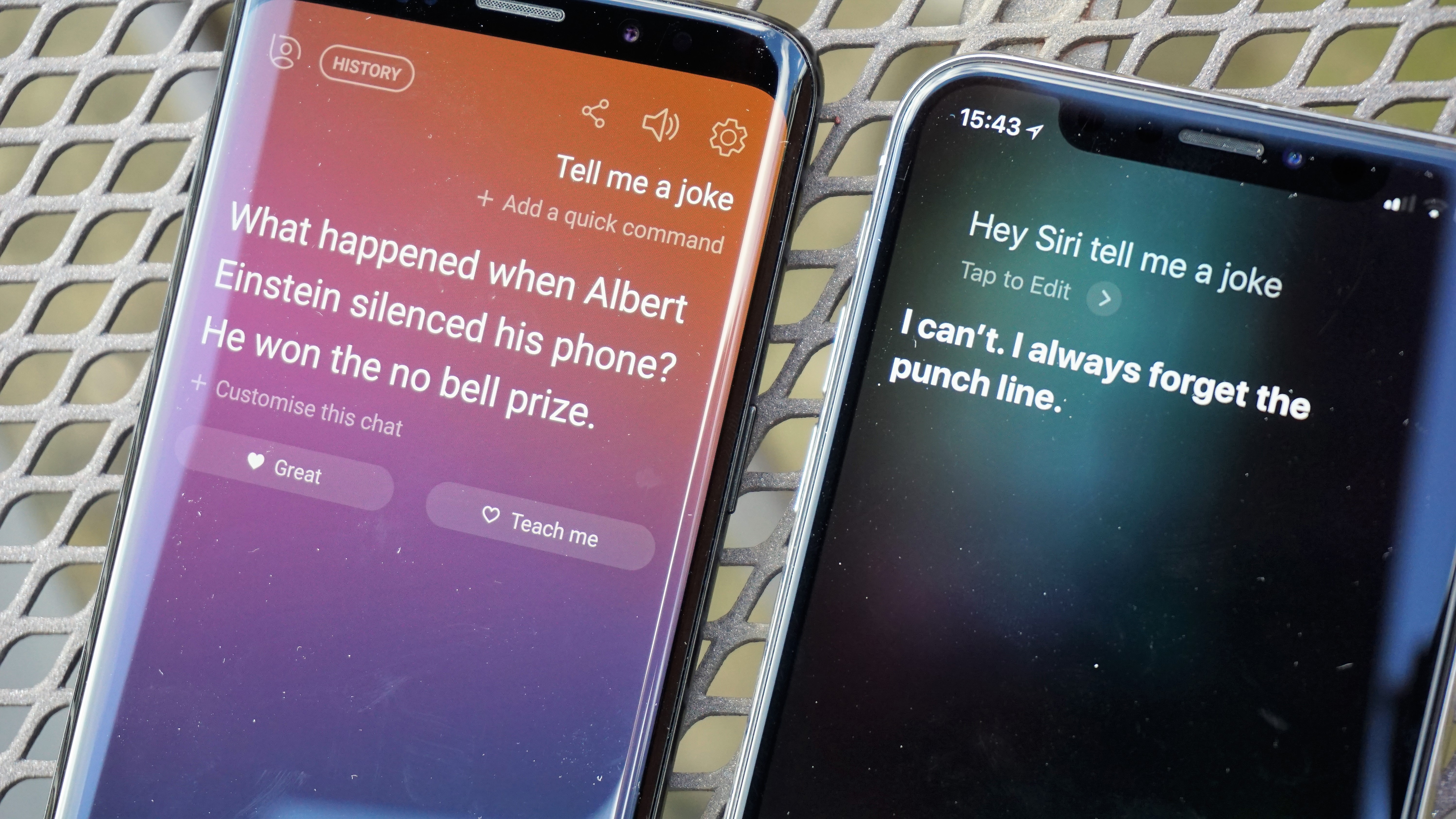
However, when you do turn on Vision the features are pretty useful. Bixby is much, much better at being able to work out what it's seeing than what it’s hearing, and can give accurate results on the web for things like comics, lamps and nature scenes.
The translation tool is also very strong – it comes up with some weird answers here and there, but on the whole it's very easy to work out what you're looking at. Samsung is making a big deal about this feature, although in reality it's a bit niche... you'll need to be in a foreign country, with data, and completely unable to work out what you're looking at.
So while it's good that Bixby has been upgraded, to at least bring some sense to having that button on the side of the phone, it's still a novelty rather than a must-have feature.
Mapping the button to Google Assistant is still a far better way to get the most from your phone with your voice (although you’ll need to download a third party app to do it), despite it being more limited in scope... at least it manages the things it can do very well.
It's a shame Samsung doesn't offer the option to switch the button to Google Assistant, as we enjoyed the Assistant button on the LG G7 ThinQ.
Improved biometrics
- Intelligent scan is accurate, but not as secure
- Far easier to unlock your phone

Anyone who read our Galaxy S8 review last year would have realised quite quickly that the biometric unlocking features of that phone almost made it unusable. The fingerprint scanner was too hard to reach, the iris scanner too unreliable and the facial recognition just too poor.
Samsung needed to do something, and it has, with all three features now working seamlessly and interchangeably.
Intelligent Scan marries the iris scanner and facial recognition to make unlocking your phone with your face a far, far simpler task, and as mentioned the fingerprint scanner is much easier to hit.
The speed of the Intelligent Scan feature is so much better than last year... where the iris scanner and facial recognition on the S8 were between 30% and 50% accurate, the two together on the Galaxy S9 yield success almost every time.
In low light the iris scanner is still a bit slow to react, and not always pleased to let you in (in this case, Apple's Face ID absolutely destroys it for accuracy and ease of use), but it's so simple to just flick your finger to the scanner on the back that we never had an issue.
That's a real benefit over the iPhone X and XS, keeping the fingerprint scanner.

There are a couple of flaws with the biometric system. First, the 2D scan of the face the S9 makes to recognize you isn't as secure as other methods, like the fingerprint scanner or Apple's Face ID.
That's not a huge problem for us – the fingerprint scanner is a better way of paying for things anyway, and really biometric unlocking is more about convenience than it is security.
We weren't able to dupe the Samsung Galaxy S9 with a picture of our face, so if you lose your phone you can feel secure in the knowledge that the thief isn't getting in, which is what most of us really want.
Second, and more frustratingly, you can’t really unlock the phone when it’s placed on a table – the field of vision for the scanner is limited, so unless you weirdly shove your head over it you won’t get in, whereas Apple’s Face ID offers a much wider viewing angle.
New speakers
- AKG tuned sound is loud
- A tiny bit lacking in punch, but a big upgrade on the S8

The other key feature that Samsung is talking up on the Galaxy S9 is the improved speaker setup. If you're tired of hearing sound shoot out the bottom of your phone, you'll appreciate that the top earpiece is now able to fire out sound towards your face.
These speakers have also been tuned to support Dolby Atmos sound, giving you a sense of space from the audio coming out from your phone.
Given how thin this phone is, the overall volume and quality of sound coming out of it is impressive. If anything the volume can go a little too high, and we found ourselves turning it down on occasion, despite only watching videos on social media.
The quality isn't the best on the market – there's definitely a little more punch and clarity from the iPhone X, where the Galaxy S9 is a little bit muddier – but the idea here isn't to replace a Bluetooth speaker, but rather provide a decent experience when listening to music or podcasts without earphones.
- Same design as previous year, but stronger
- Still an excellent, premium-looking phone
It would be too easy to say the Samsung Galaxy S9 is just a carbon copy of the Galaxy S8... but it's very, very close.
There are a few slight changes that make a big difference though, starting with the materials used to make this phone. The fact it's using Gorilla Glass 5 is a big step forward, as it means the phone is even better able than its predecessor to withstand knocks and drops, removing the need for a case if you're not into encapsulating your new expensive phone.
The aluminum used in the construction of the device is also more robust, so less twisting is possible should you accidentally feel the need to warp your phone.
One thing we noticed during our first few weeks of using the phone was the lack of scuffing – if you're using a modern smartphone without a case these days you'll often find that it soon picks up a few nicks – further evidence of an upgrade on the materials used.
But overall it's a very similar design to last year, and only turning the Galaxy S8 and S9 over to reveal their backs will reveal the main difference: the fingerprint sensor has been moved below the camera, rather than being located to the right of it, in a bid to make it more accessible.

And, thankfully, it is more accessible. Where last year the placement of this sensor nearly ruined the Galaxy S8, the fact that it's now so easy to land a finger on it makes the Galaxy S9, well, as simple to unlock as a phone should be.
Thanks to packing a 5.8-inch screen and very little bezel above and below the display, the Samsung Galaxy S9 is easy to manage one-handed while still offering a lot of screen to look at.
Samsung continues to offer a headphone jack, which will be welcomed by the reams of people who haven't invested in a pair of Bluetooth headphones, or don't want to use a dongle adaptor with their favorite pair of wired cans.

It's well placed on the bottom of the phone to the left, and easily lets the phone slip into the pocket with a pair of earbuds connected.
Unfortunately, the Bixby button remains on the left-hand side of the phone, right in the middle.
As you'll see later, Bixby serves a better purpose on this phone, but it's still not enough to warrant a dedicated key – and one that feels like a volume switch when sliding your finger down the side looking for it in the pocket.

Holding the Samsung Galaxy S9, you'll definitely feel that you've got a phone that's worth a little more money.
The design is still as attractive as ever, the glass shimmering nicely, the buttons offering a perfect travel and the balance in the hand feeling like just the right mix of strength and a lighter weight.
The only thing we can really criticize (apart from the Bixby button's presence) is that it really sucks up fingerprints. The back of your phone will be a smudgy mess in no time – but that’s a natural result of it being made out of glass, and a quick wipe will restore its looks.
Color choices are limited with it being available in Midnight Black, Lilac Purple, Coral Blue, Titanium Gray and Sunrise Gold. That last one is a relatively new addition for the US market, and it's worth noting you won't be able to buy every color in your country.
Screen
- Same technology and resolution as S8
- Maximum brightness is boosted

The Samsung Galaxy S9 screen has already been independently judged to the very best on the market, bringing with it the best in color reproduction, brightness, accuracy and overall sharpness.
It's also been dubbed, by DisplayMate, which conducted the tests, as the least reflective display on the market, meaning you'll be able to see more of the on-screen action when you're in bright sunlight, or in a room with a strong light behind you.
But those are official findings made in lab conditions – the bigger question is whether the 5.8-inch display Samsung has slapped on the Galaxy S9 is actually any good in real-life testing.
The good news for those looking to buy this phone is yes, the screen offers phenomenal quality. The color reproduction, the brightness, the clarity of the screen are all faultless in our eyes, and actually Samsung has managed to make the Super AMOLED technology used for the display deliver images that are more true to life than ever.
Previous Samsung phones have been overly colorful when it comes to color rendition, being known for images that have an almost cartoon-like character, but if anything we'd like a dash more color from the Galaxy S9.

You can get this by heading into the settings and choosing a different color mode, and if you're willing to tweak some settings, you can alter the color and white balance of the screen yourself.
It's a world away from what Apple does with its screens, not allowing the slightest alteration, but Samsung wants to make sure that, if you're willing, you can get your perfect color balance.
However, while the display technology is good, the auto-brightness still has issues – and it feels like we say this far too often about Samsung phones. The device always errs on being too bright, and that's a battery-sucker.
What's interesting on the Galaxy S9 is that phone actually learns your brightness preferences, noting when you boost or dim the screen in certain situations, and mimics those settings for you in similar conditions.
We had to reset this to try and get a more useful brightness level, as we were artificially boosting it to look at certain elements of the display, but it's an advanced move from Samsung, and shows just how much the brand is trying to make its phones more useful without the need for settings tweakery.
Users of some phones, such as the Google Pixel 2 XL, have reported color shifts when viewing the screen at an angle, and while the Galaxy S9 does have a more blue tinge when moved around, it's far from terrible.
That said, place it next to the iPhone XS and you’ll see that Apple has tuned Samsung’s technology to be much better looking from an angle. The Samsung Galaxy Note 9 has also launched since Samsung's phone, and that has a screen that's both marginally better and a lot bigger.
The low screen reflectance really does come to the fore in day-to-day use – we found it possible to watch an episode of a Netflix TV series with a bright window behind us. It wasn't the most pleasant experience, as the reflections were visible, but given it wasn't that long ago that we weren't able to use our smartphones in the sunlight, we've come an incredibly long way.

The Samsung Galaxy S9 has also been certified for use with Mobile HDR Premium content – there's not a lot of that around at the moment, but Samsung has been careful to make sure its displays can handle the top standards on the market.
That said, the S9’s display doesn’t support Dolby Vision, the brand’s advanced HDR format, which is a shame given that Dolby's Atmos audio platform is supported on the phone.
The Edge display is back from Samsung, making use of the curved edges rolling into the side of the chassis. Using the Edge screen to set your favorite apps, key contacts or record a section of the screen as a GIF seem like really cool things to be able to do… but in reality, we just forget it’s there.
What’s it like to use?
- An incredibly powerful phone
- Keyboard needs a lot of work
The Samsung Galaxy S9 isn’t really that different to the S8 in terms of its interface. It’s running Android 8 Oreo out of the box, and it’s also signed up to Google’s Project Treble, meaning we’ll be seeing faster upgrades to the latest versions of Android in the future.
Indeed, an update to Android 9 Pie is expected in early 2019. In fact, the roll out has already started in some regions as of mid-January.
We’d argue that Samsung has one of the best implementations of an Android skin out there, with the settings, the notifications bar and the icon management on the home screen among the easiest to use.
The Galaxy S9 apes the iPhone’s 3D Touch feature on the home screen, allowing you to long-press an app and have a selection of items pop up – be it playlists on Spotify, most-contacted friends on WhatsApp or the option to take a selfie with the camera – and jump straight to the one you want.
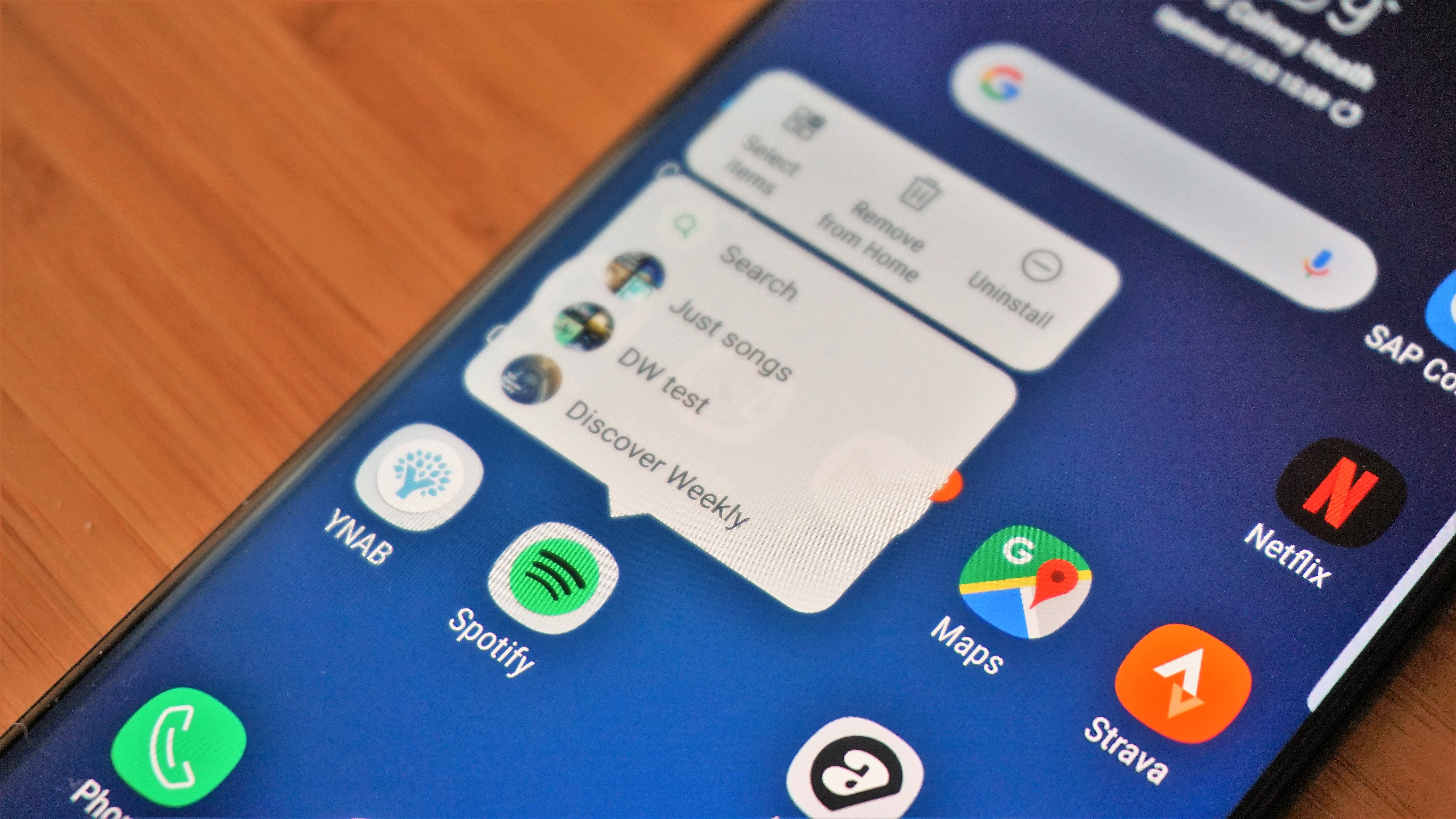
Like the Edge screen on the side of the phone, where you can swipe your finger across and get access to quick shortcuts for apps, we just forget to use it so often., and it’s the same with the extra menu for the home screen apps.
One thing we’re still perplexed about: why the Samsung Galaxy S9’s inbuilt keyboard is so bad. It’s not that it’s inaccurate (although it’s a long way from being perfect), but it learns but it learns wrong words, or capitalizes words randomly, then suggesting odd replacements when you correct it.
Again It’s not a massive issue, but given that you need this keyboard to use AR Emoji GIFs properly we’d have expected Samsung to make it bulletproof on what could be one of the top-selling phones of 2018.
- Low light performance is incredible
- Some photos seem oddly washed out
- Overall quality is still amazing

According to the marketing materials, the single-sensor 12MP camera on the Samsung Galaxy S9 is the big change that’s going to inspire you to buy this phone.
‘The Camera. Reimagined.’ would be a bold statement from any photography brand, let alone a smartphone maker, and in reality Samsung has been over-dramatic here.
The key upgrade is the fact that the sensor can now switch between an aperture of f/1.5 (for great low-light shots) and f/2.4 (for better brighter scenes), while improving the intelligence of the sensor so that it can analyse and improve your images more effectively.
On top of this, Samsung has refined the photography modes on offer, allowing you to take myriad different styles of shot – and nearly all of them are useful and worth playing with.

Let’s focus on the auto mode though, as that’s going to be the one that most Galaxy S9 users snap through. It’s excellent as ever, but possibly not that big of an upgrade over the Samsung Galaxy S8.
In bright light, the pictures from the Galaxy S9 are without equal in terms of clarity; there’s a sharpness, brightness and overall quality that still stuns when you learn it’s come from a smartphone camera.

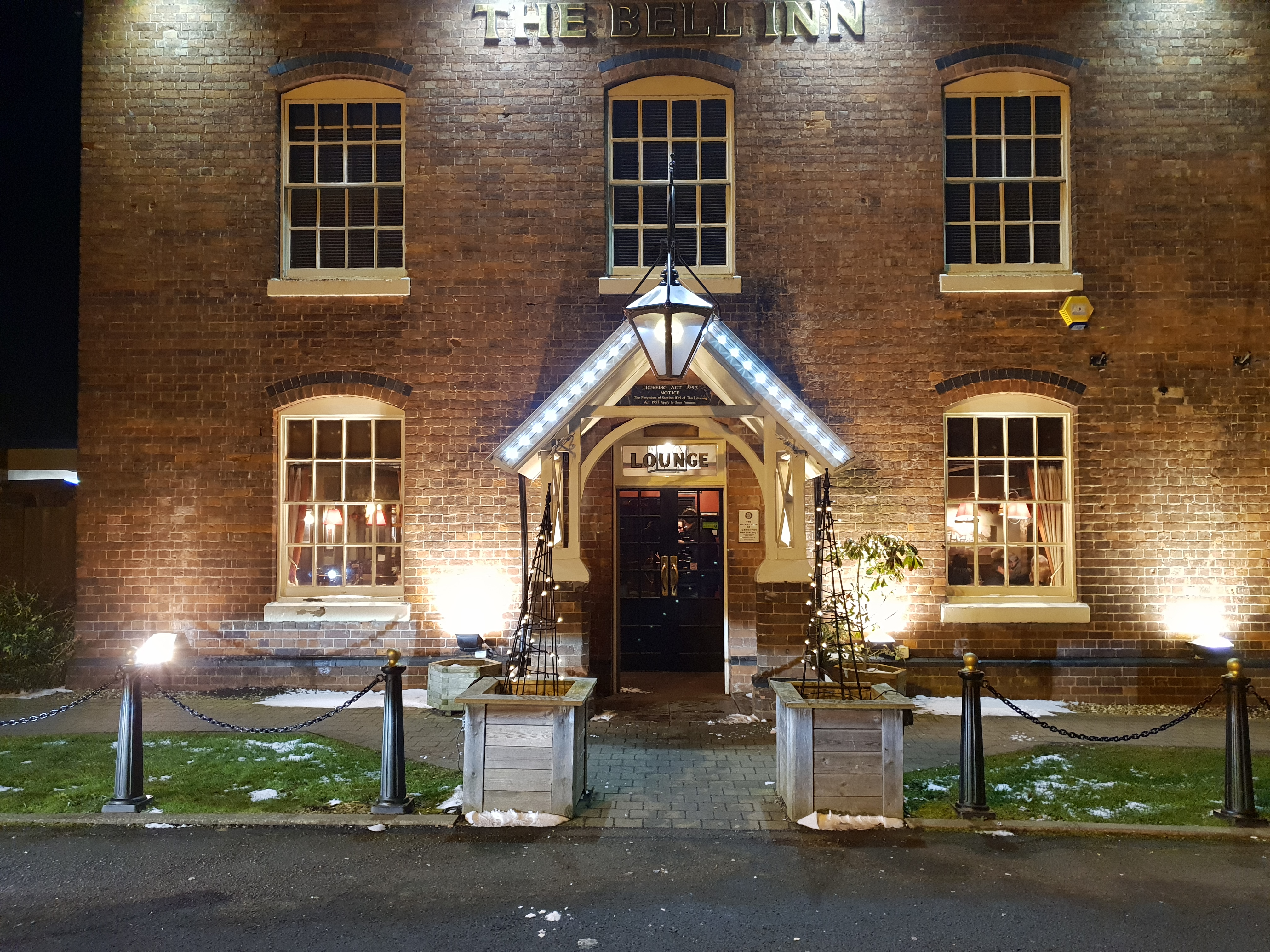









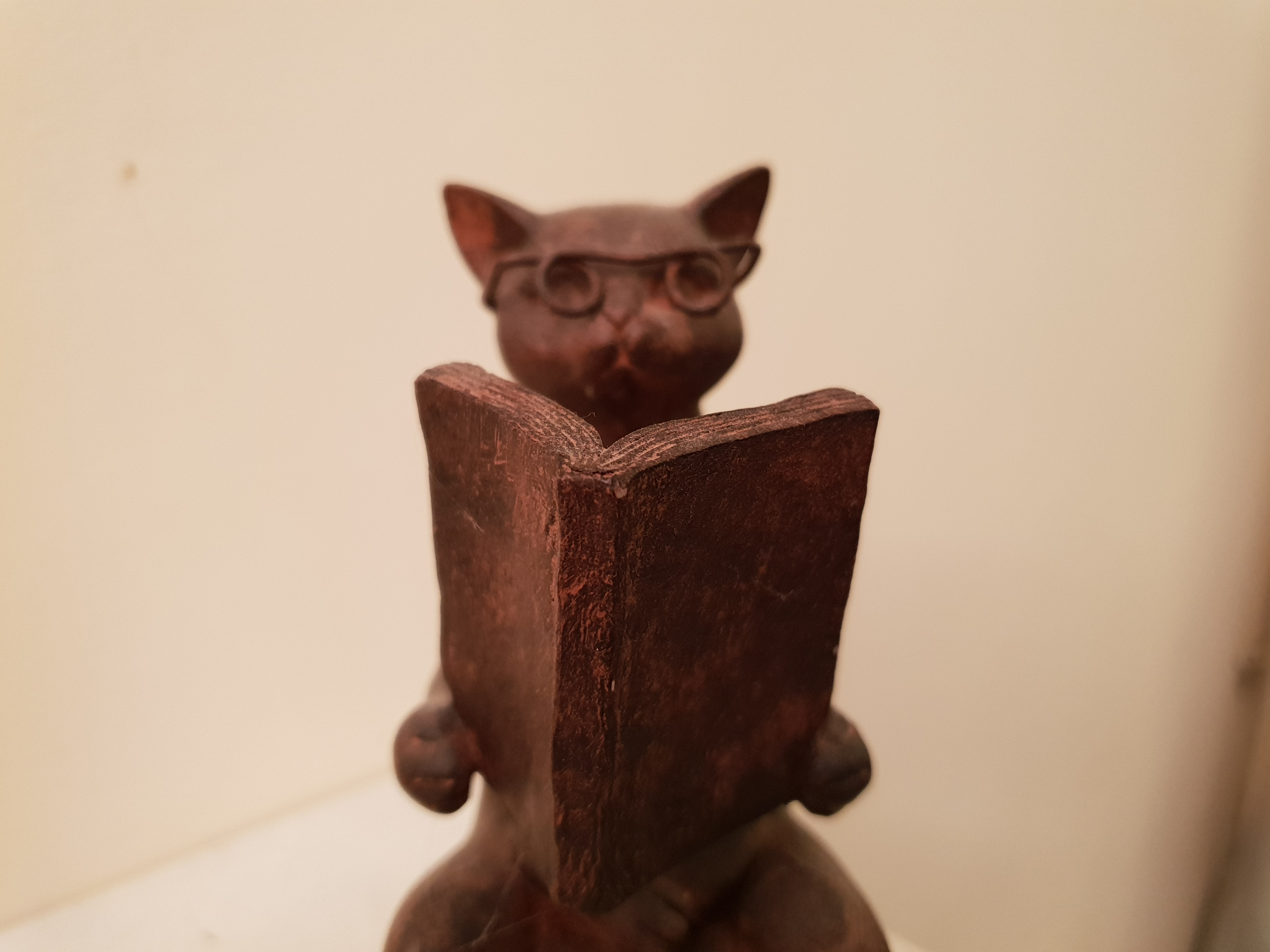
The Galaxy S9 is also adept at shooting in low light, thanks to that lower aperture, which hasn’t been seen on a smartphone before.
Yes, the images are a little on the muddy side, but when compared to low-light snaps from other top-end phones that were out when this launched (the iPhone X, for instance) the lack of the noise and the higher brightness is amazing.
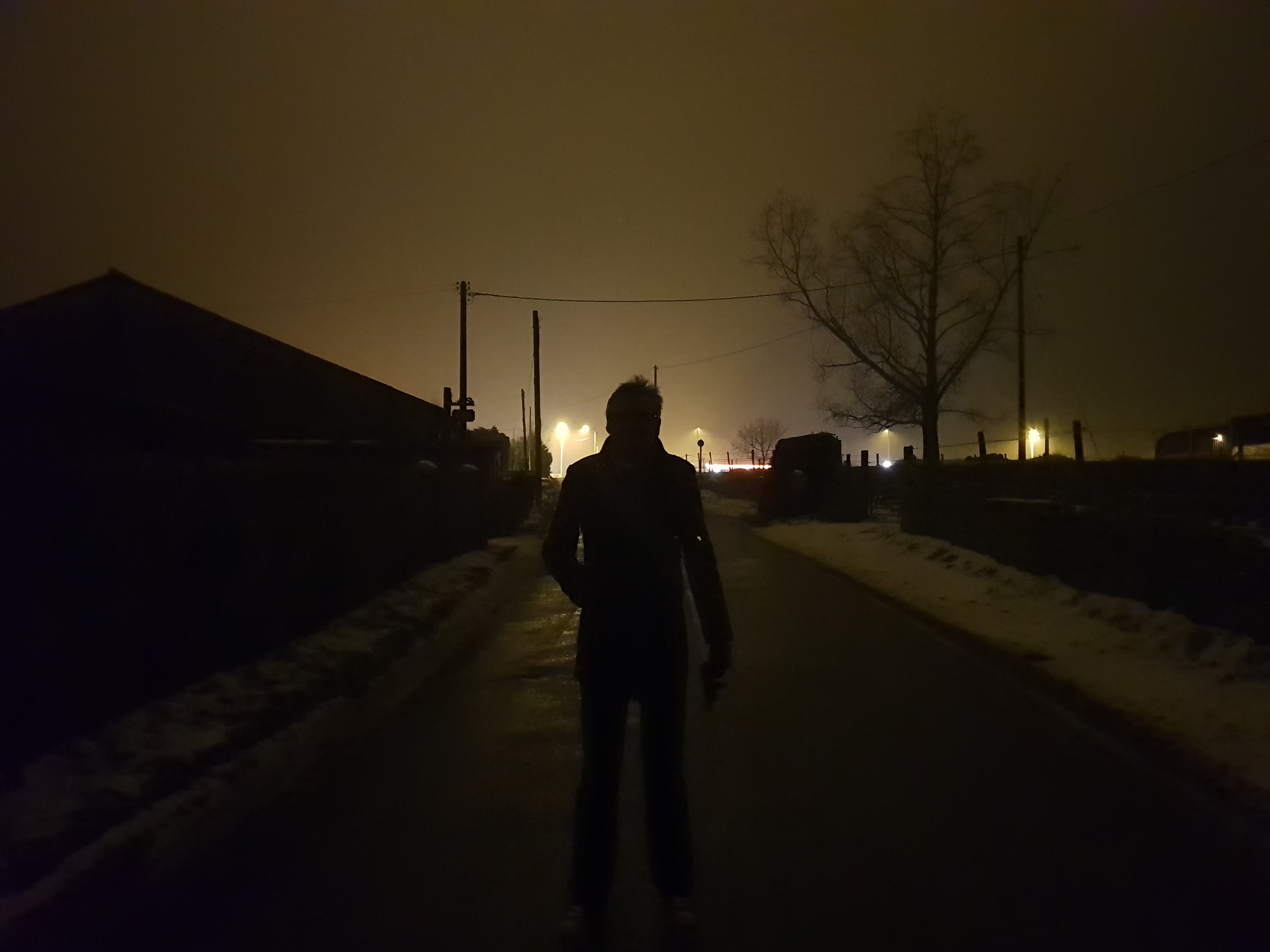





If we were to be picky, we’d say that some of the images we’ve taken lack a real pop of color – Samsung has seemingly decided that it wants its cameras to produce images that are more natural-looking, but this comes at the expense of vibrancy at times.



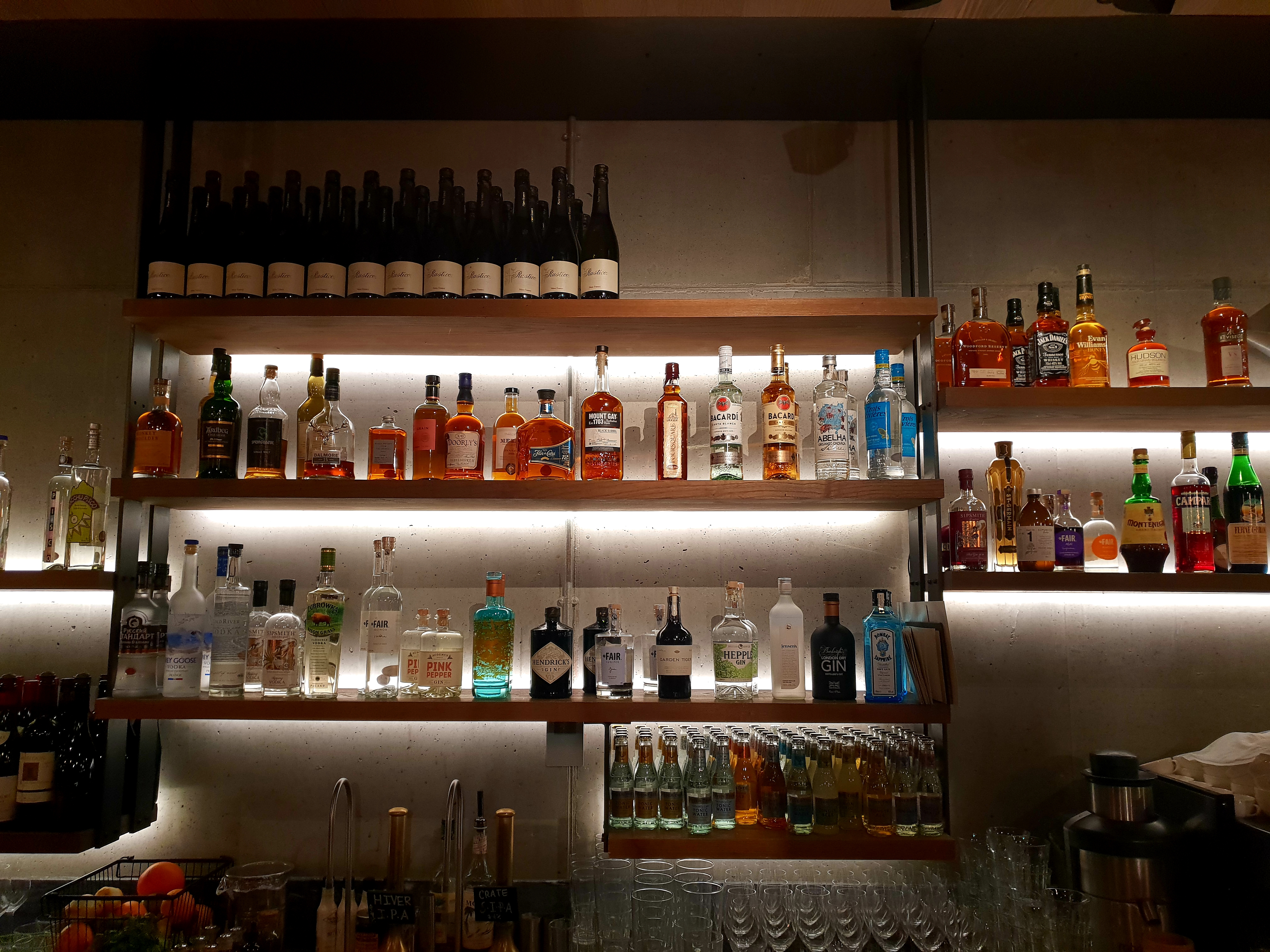
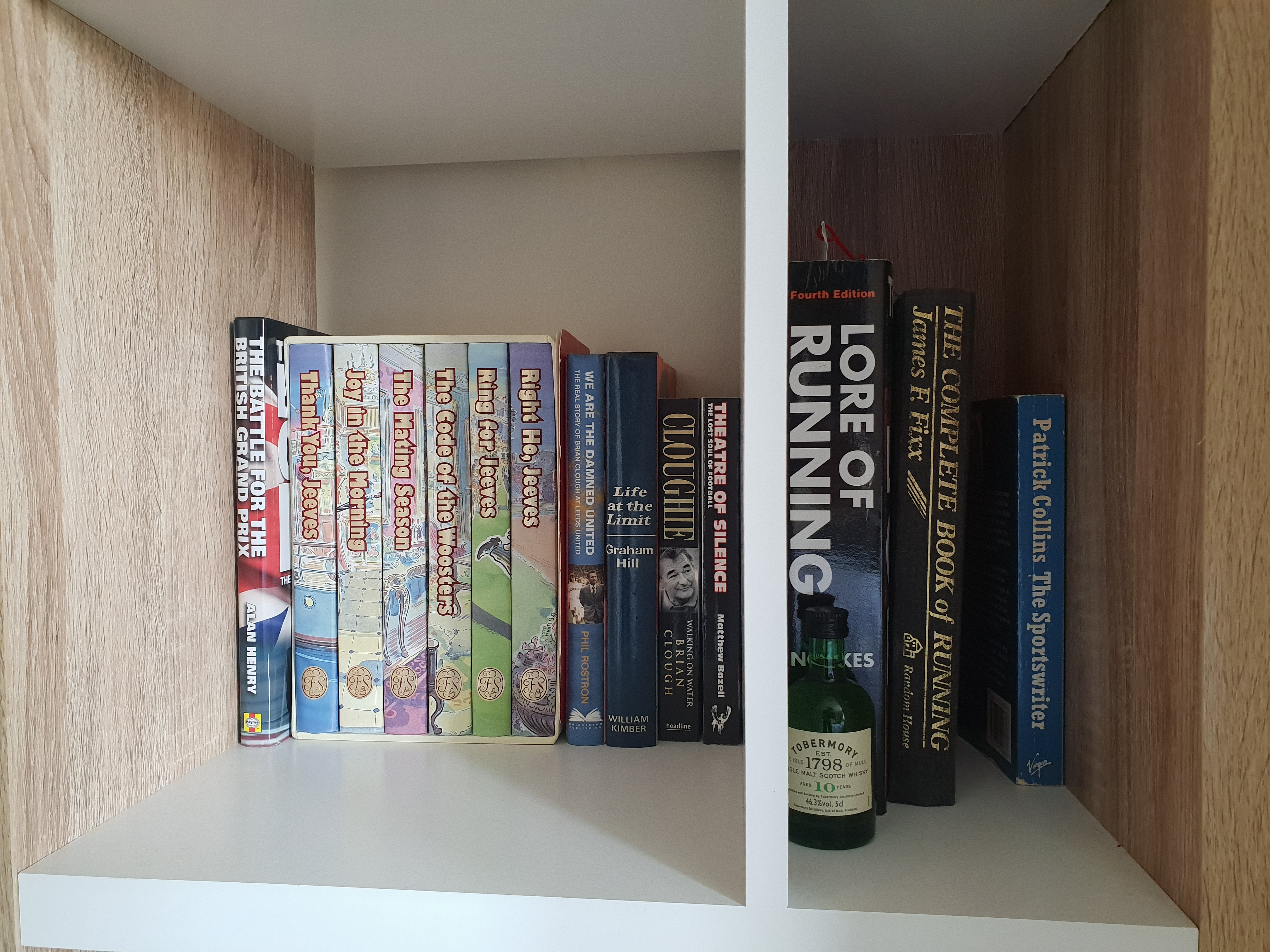

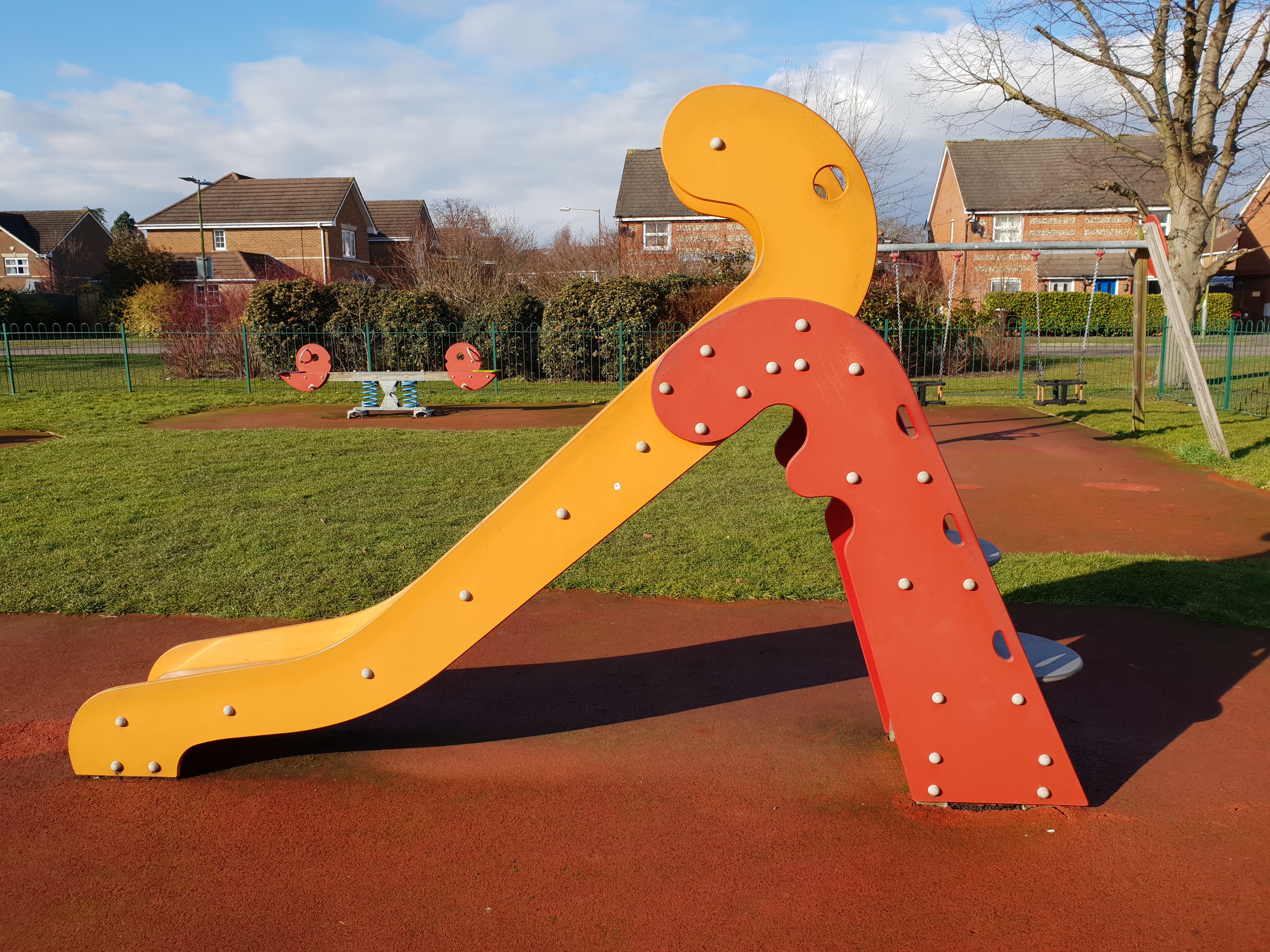

We found that just hitting the edit button and selecting the ‘auto’ enhancement created such an improved snap… why not have that all the time, Samsung?
There’s also some definite shutter lag when moving quickly between scenes, as the autofocus and exposure take a moment to recalibrate before being ready to take a picture.
On a few occasions we were trying to get a shot simply by taking loads of photos to see if one was in focus, but were delayed by the shutter lag.



A bit of background light can also wash out the picture in auto mode, and even playing around with the pro settings didn’t make things much better – although we do have to doff our cap to the excellent abilities of said expert mode, as it’s not only comprehensive but also very easy to use.
Those points aside, you’ll generally struggle to take a bad photo with the Galaxy S9. The clarity, even when the lens was zoomed, in some of the pictures we took, and the ability of the camera to pick out details in high-contrast scenes are impressive.

We did have to take a shot a couple of times to get the right result on occasion, but we still managed to get a good snap in the end. The Galaxy S9’s ability to handle scenes with strong backlighting is also excellent, with bright sunlight not causing a subject the foreground to become a total silhouette.
The selfie camera, coming in at 8MP, also handles low light well, although it doesn’t have the wider field of view some other smartphones offer, such as many top-end models from LG.
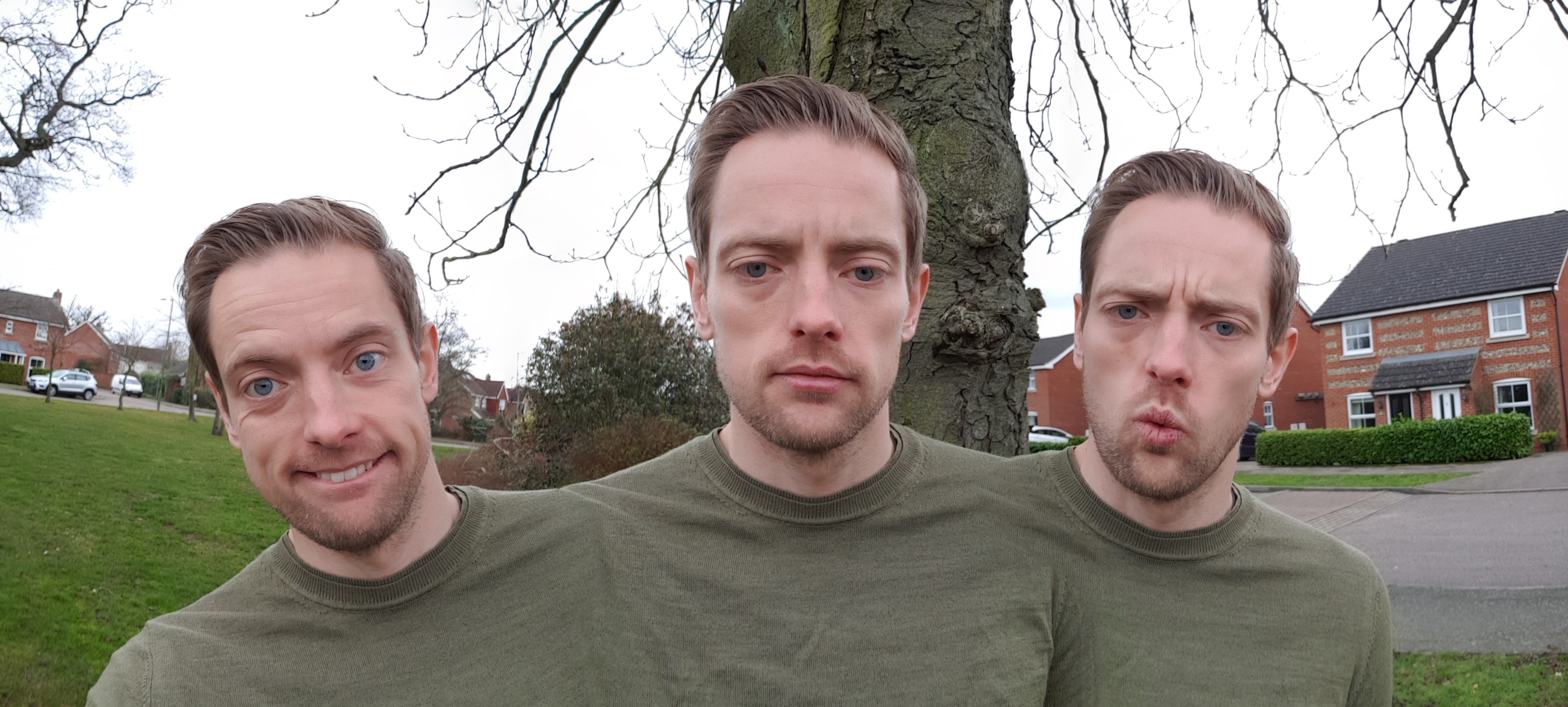

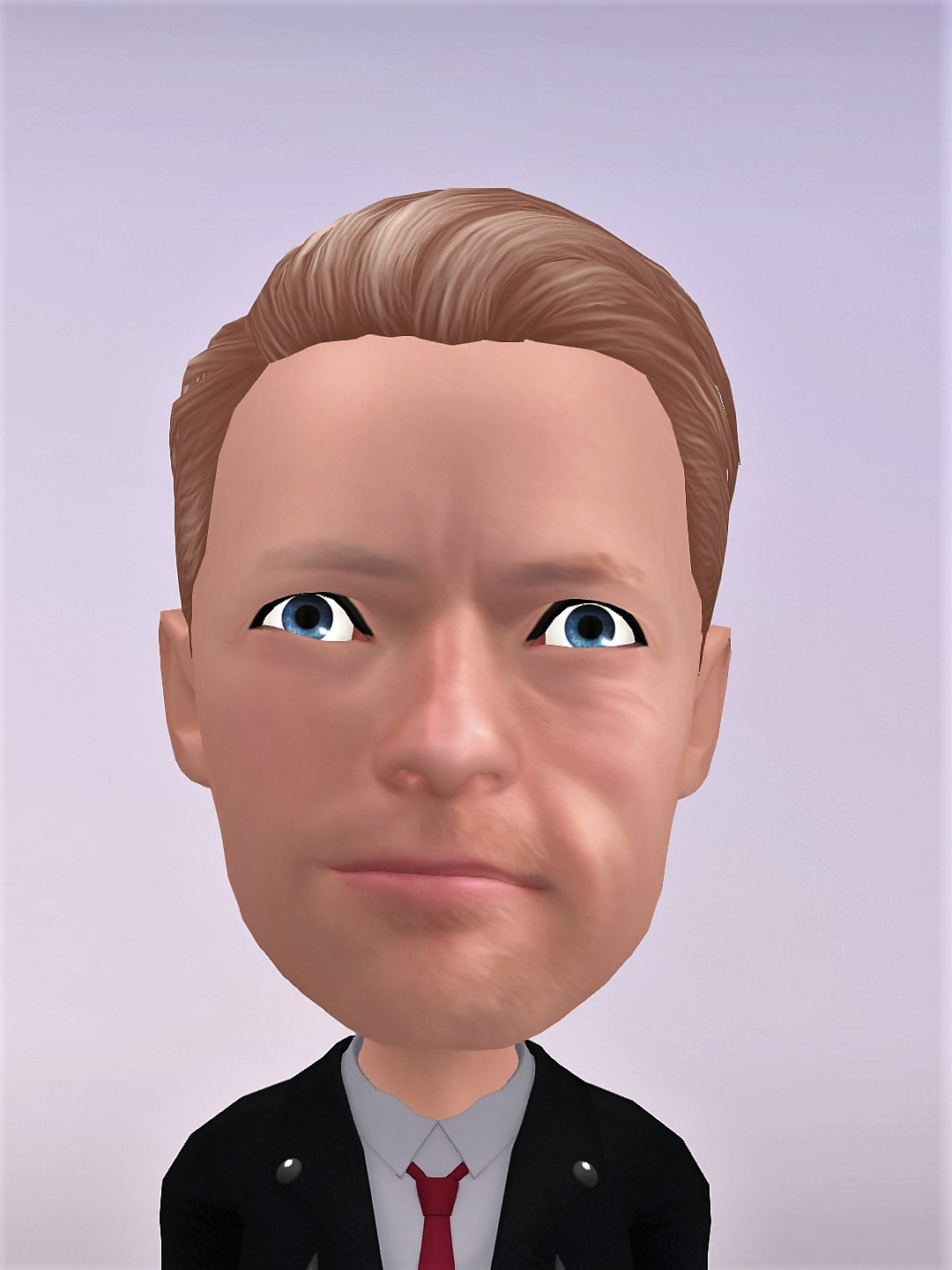

This is compensated for by a panorama mode that allows you to swivel to get more people into the picture… it’s a little tough on the wrists, but it produces some decent effects.
Samsung has also included a portrait mode that blurs the background for your Galaxy S9 selfies. It’s similar to what the TrueDepth camera can do on the iPhone XS, and the effect isn’t that different, with some decent background blur, although you can’t take the ‘studio’ shots with the blacked out backing that Apple is shouting about at the moment.
Super slow motion capture
The other new feature is the super-slow-motion camera, which can capture 960 frames per second, turning a 0.2-second instant of movement into a six-second long slow-mo clip.
In bright light, it’s exceptional… as long as you’re either holding the phone steady or are ready on the trigger. You can set the S9 to automatically sense movement, but this only works in bright light with the phone almost motionless; don’t expect this to work well in your hands.
When it does work, it’s amazing, but too often we were stuck trying to find something interesting to shoot in slow-motion.
The other option is to do it manually, which is much easier as the camera is constantly recording and so the action is recorded from the moment you want to start – there seems to be some caching going on so you don’t miss anything.
But don’t think about trying to shoot slow-motion footage in low light – it gets very noisy and low quality, which is understandable given the amount of information that needs to be processed.
You'll also notice that anything that flickers imperceptibly to the human eye - like stadium floodlights or TVs - will be picked up in a very strange manner.
You can use the flash, but most scenes we wanted to film had a wider frame, and it was hard to illuminate them with a phone’s little LED.
Overall, we had expected a little better from the Galaxy S9’s camera given the loud noises Samsung has been making about its performance, although the low-light capability does border on the astounding at times, and the fact that the camera is so powerful in all conditions means you’ll get some really great snaps.
The color reproduction doesn’t impress us quite as much as something like the Google Pixel 2 did at launch, however, and the iPhone X will sometimes offer a more well-rounded image quality – but overall, the Galaxy S9 has a simply awesome snapper for most scenarios, and playing with the settings really does reward.
That said, other recent handsets have overshadowed it slightly, with the Google Pixel 3 range, the Huawei Mate 20 Pro and the iPhone XS among others all topping it in our list of the best camera phones.
Image Credits: TechRadar
- Battery life is disappointing
- Not much change from last year

We’re disappointed with the battery life in the Samsung Galaxy S9, as it’s not made the jump forward we expected.
With the same 3,000mAh power pack on board as the Galaxy S8 and the same amount of pixels to drive, but with a more efficient processor, and with Samsung having had a year to refine the software, we were expecting big things from the Samsung Galaxy S9’s battery.
What we got was something that’s a bit more ‘slippery’ than the Galaxy S8. Where we’d have around eight hours of battery life left when the indicator was showing 60% full, now we’re seeing the same numbers at 70%.
The worry with Android phones is always that there’s a nefarious app playing around in the background, causing more power to be drained than necessary, but our constant checking showed that it was usually just the screen – which is brighter this year – drawing more power.
What’s interesting here is that Samsung has clearly optimized things, as when we ran our standard video test (90 minutes of a Full HD video at maximum brightness) the Galaxy S9 only lost 17% of its battery.

That’s not the best we’ve seen on test (for comparison, the iPhone X lost just 10% using the same screen technology as Samsung), but it’s a marked improvement over the 23% the S8 lost last year… and the S9 has a brighter screen.
The overnight test result was pretty standard – the battery lost 5% in an eight-hour period, which is bang-on average for a modern smartphone. Again, however, we’d have hoped for more from one of the top phones of the moment.
Wireless charging is present once again, and Samsung remains one of the only brands to be compatible with both the Qi and PMA standards; in short, your Galaxy S9 will charge on any wireless pad.
While fast charging is enabled via wireless as well, we didn’t note a particularly fast charge without wires – although that could be due to the fact that the Galaxy S9 took so long to ‘settle down’.

We’ve been testing phones for a long, long time, and we always make sure to cycle the battery through a few charges before making any assumptions, as often it takes a few days to make sure all apps are optimized and patches downloaded, and for the phone generally just to shake itself out.
This process took a lot longer than expected for the Galaxy S9, and after a week it was only just starting to settle… battery life gradually improved, but we’re still needing to boost the charge at least once to get through to the end of the day.
Perhaps users will find this improves after a few weeks’ use… but based on what we’ve seen, the Galaxy S9 is only just a touch better than the iPhone 8, and weaker than last year’s Galaxy S8. For stronger battery life from a recent Samsung flagship, consider the Samsung Galaxy Note 9.
The Samsung Galaxy S9 is two things: first, it’s a very impressive smartphone, and one of the best in 2018. Second, it’s a disappointing upgrade over the Samsung Galaxy S8.
The reason it can be both these things at once is that the Galaxy S8 was a brilliant phone, marred only by the biometric issues that made it hard to actually unlock the handset. In solving those issues Samsung has righted a big wrong from 2017, but beyond that there isn't really much that impresses.

And that's important, as the Galaxy S8 is still on sale for a lower price, thus making it a tempting alternative for those thinking of getting the new Samsung phone.
With the Galaxy S9 offering the same design and screen as before, and only a few minor upgrades, Samsung is going to have a tough time convincing people they should go for the improved model.
That said, those upgrades are mostly things that will actually benefit the user. The Galaxy S9 camera is exceptional in low light, which you'd expect given the innovative dual-aperture technology Samsung has used in this phone.
The improved materials used in the construction offer a stronger phone, and while you won't feel that when picking it up, you'll be thankful for it a year or two down the line.

The relocation of the fingerprint scanner, combined with the far-more-accurate Intelligent Scan unlocking system, makes the Galaxy S9 eminently more usable than the Galaxy S8 – if you can't unlock your phone easily, it's pretty useless.
AR Emoji has been given a big marketing push, but it's largely a novelty, and an uninspiring one at that. It needs more weighty hardware and software behind it to work effectively, so if you're enticed to buy the Galaxy S9 by this feature we'd advise against it.
The extra speed on board is nice to see, but it's not really adding anything at this stage – what we did want to see was improved battery life, and we didn't get that.
Should I buy it?
The camera is the big reason to go for the Samsung Galaxy S9, along with the uprated power and improved construction, but it's not a great leap forward. The camera flatters to deceive at times, with the color reproduction the main issue for us.
It's annoying to see that a photo which only looks half-decent when you snap it can be instantly improved simply by adding an effect in post-processing – it's hard to work out why Samsung doesn't just do this automatically.
With its not vastly reduced price versus what this handset cost at launch, the Galaxy S9 is argubly a better buy now than it was in March 2018, but there's a new Galaxy just around the corner.
The Samsung Galaxy S10 will launch on February 20, and you're best holding off until then to see what the new phone has to offer. If it's not something that takes your fancy, the S9 is likely to get even cheaper post-launch.
Not convinced this phone is for you? Check out these instead:
Samsung Galaxy Note 9

Bigger, newer and arguably better than the Samsung Galaxy S9, the Galaxy Note 9 is a similar phone in many ways but with a dual-lens camera, a stylus, a 6.4-inch rather than 5.8-inch screen, and a big 4,000mAh battery.
It's a great productivity and media machine, but might be overkill for some users. It's also of course more expensive than the Galaxy S9, and from screen quality to design and power, it's not much of an upgrade in many of the key areas.
iPhone XS

Okay, so there aren't a huge number of people who switch between these two big brands’ handsets, but hear us out. The iPhone XS is a faster phone with a comparable battery life, and offers the kind of app stability that Android owners still lust after – that's a key thing.
The camera is also very strong, but it's more expensive, and doesn't have a headphone jack. That said, along with the iPhone XS Max it's the most impressive iPhone we've ever tested, so if you're thinking of making the jump then one of these would be the iPhone to jump to.
Samsung Galaxy S9 Plus
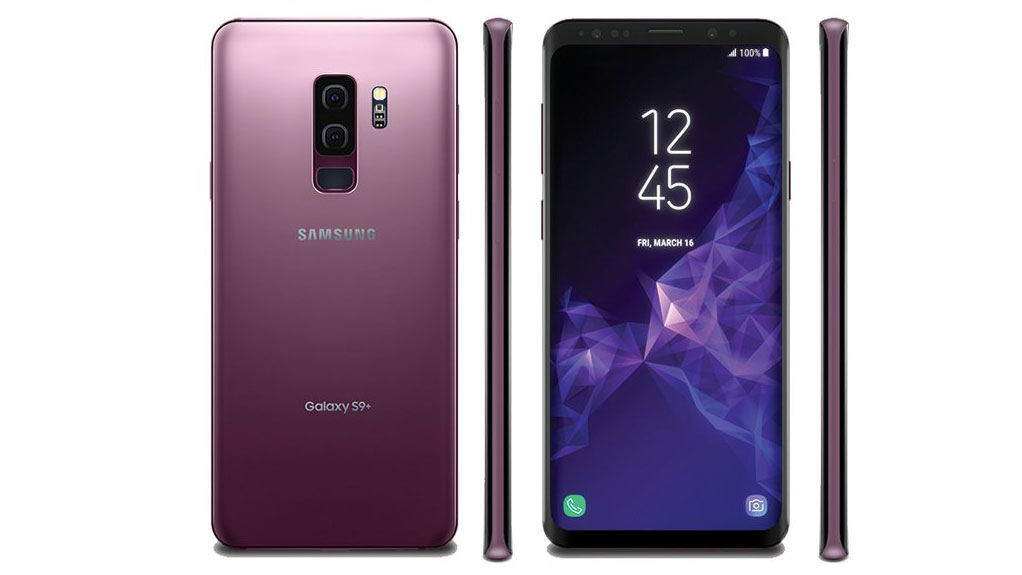
If, however, you're thinking of sticking with the Samsung Galaxy range and want the best out there, then the Galaxy S9 Plus is the way to go. It's a phone that has all the power of the S9, but adds in longer battery life and a better camera thanks to having dual sensors on the rear (which brings better quality photos, in our tests).
It's more expensive, yes, but if you want something that just works well and offers a great screen experience, the S9 Plus could be called the S9 Turbo, such is the upgrade on a couple of the issues that irk us with the S9.
First reviewed: March 2018
from TechRadar: Technology reviews https://ift.tt/2FJbeFY
No comments:
Post a Comment